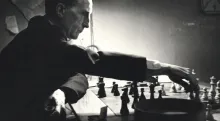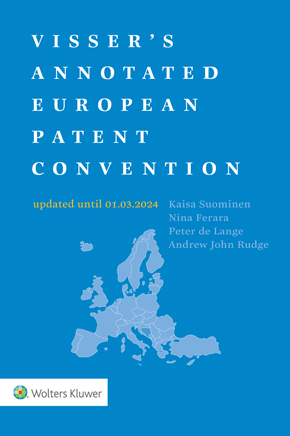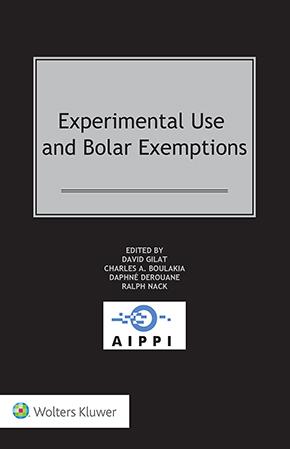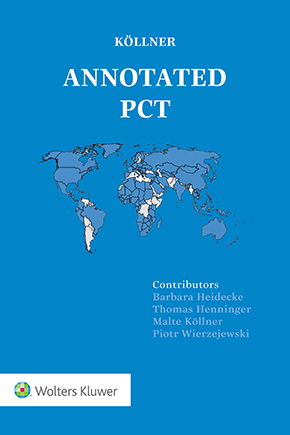Discordant Frequencies: Is the UPC Truly a Jurisdiction?
June 3, 2025
Yesterday, I shared some early figures from the UPC Court of Appeal, offering a glimpse into how the Court operates two years after its launch. But those reflections lingered long after I closed my laptop. They kept me up — long enough to return to a thornier, more theoretical question that has remained unresolved since the heated debates of 2012: If the UPC is part Rammstein (precision-engineered Teutonic riffs) and part The Clash (raw London punk energy), can it truly be considered a “court or tribunal of a Member State” within the meaning of Article 267 TFEU?
The Dual Test of Article 267 TFEU: Structure and Function
Article 267 TFEU empowers “any court or tribunal of a Member State” to request preliminary rulings from the CJEU. This notion has been refined through a long line of case law—Vaassen-Göbbels (Case 61/65), Nordsee (Case 102/81), CILFIT (Case 283/81), Corbiau (Case C-24/92), and Häupl (Case C-246/05)—which articulate a dual test. A body must meet both structural criteria (legal establishment, permanence, compulsory jurisdiction, application of binding rules, independence) and functional integration (its rulings must be regarded as national judicial acts). The two lines are closely intertwined, particularly around judicial independence, which straddles both dimensions.
UPC on Paper: Structurally Sound?
Structurally, the UPC appears to tick most boxes. Created by the UPCA, signed on 19 March 2013, it is permanent, has exclusive jurisdiction over unitary patents and most European patents unless opted out (Article 32 UPCA), and its judges swear independence (Article 21 UPCA). Panels sit permanently; local divisions handle routine cases; the central division handles revocation actions.
But What About Oversight? The Administrative Committee Problem
Despite this façade of compliance, serious concerns emerge when one examines the Administrative Committee, which accumulates legislative, budgetary, and judicial powers (Articles 11–17 UPCA). It adopts internal regulations, controls the Court’s budget, and appoints judges—all without external oversight. This concentration of powers in an intergovernmental body raises doubts under CJEU case law (ASJP, C‑64/16; LM, C‑216/18 PPU), which requires statutory safeguards to guarantee judicial independence: secure tenure, transparent appointments, and protection from political influence.
A Closed Circle of Appointments
Under Article 17 UPCA, judges are shortlisted by a Nominating Committee composed of Member State representatives and one from the CJEU. An Advisory Committee of patent experts then assesses the candidates and forwards opinions to the Administrative Committee, which makes the final appointments. The opacity of this multi-layered process, coupled with the dominance of those who benefit from centralization, raises concerns about self-reinforcing governance and lack of transparency. The concentration of appointment, regulation, and budgetary power in a single body is particularly difficult to reconcile with the CJEU’s LM standard of institutional independence.
Part-Time Judges, Permanent Doubts
Further complicating matters is the presence of part-time technical judges with ties to private practice. While they are barred from representing clients before the UPC, many continue to work in firms or consult, raising legitimate questions about conflicts of interest and the appearance of impartiality—an essential criterion under LM. No cooling-off period is imposed upon resignation, despite these judges having participated in internal trainings and potentially accessed confidential institutional knowledge. Such oversight, or lack thereof, undermines trust in the system’s neutrality. (See JUVE: Patent attorney dominance among UPC technical judges leads to conflict debate).
Effective Access to Justice: A Broader View
Judicial independence is not just an abstract principle—it directly conditions access to justice. Article 47 of the Charter and Article 19(1) TEU require Member States to guarantee effective judicial protection in all fields covered by Union law. That protection presupposes access to an independent and impartial court. Take the case of a small inventor—call her Dabus, not the AI—but a real individual with a real patent. She could challenge a patent’s validity before the UPC for €20,000, or €12,000 if eligible for micro-entity reduction. She could also go through national courts under Articles 71b–71d of Brussels I Recast. But the uncertainty and duplication inherent in the current setup create barriers—financial, strategic, and institutional. Legal uncertainty doesn’t just burden Dabus—it clouds the whole ecosystem.
Functional Autonomy? Not So Fast
Functionally, the UPC’s position is ambiguous. It derives its authority from the UPCA, which lies outside the EU treaties. Its panels are not embedded in any Member State’s hierarchy. Though Regulation 542/2014 retroactively amended Brussels I bis to label the UPC a “court of a Member State” this remains an interpretative fiction until the CJEU confirms it by accepting a reference.
The Benelux Court of Justice is often cited as a model—but it operates under the authority of national supreme courts. The UPC, by contrast, effectively replaces national courts in its field. It delivers binding rulings over a body of private law across 17 Member States, without being embedded in any one national system. Its legitimacy therefore hinges not only on what it claims to be—but on how it is received and treated within the Union’s judicial fabric.
To date, the CJEU has not received any reference from the UPC. As long as that bridge remains uncrossed, its institutional status under Union law remains untested. The statutory architecture is in place—but the system hasn’t been plugged in.
Final Feedback: Distortion, or Just Delay?
So where does the riff resolve? In my insomnia-induced reflection, the EU and the UPCA’s architects may have done just enough to engineer a plausible Article 267-compatible court—but not enough to eliminate the hum of constitutional distortion. The UPC stands today somewhere between a German-built tube amp and a battered British Telecaster: high fidelity in design, raw authority in sound, but still plugged into a socket few have dared to test. Dabus—the real one this time—may find the signal overwhelming. And the longer the CJEU remains backstage, the louder the feedback may become.
You may also like















Concerned observer
All very good points. To which I would add the following. Firstly, it makes no difference whatsoever that the EU legislator has labelled the UPC as a common court. The only thing that matters is whether, by virtue of its legal and institutional footings, the UPC satisfies the criteria to qualify as a common court. Secondly, as with many contentious issues relating to the UPC, the response of the UPC's supporters to even the most well-reasoned of criticisms has been to provide what one might call hand-waving responses, namely responses that cannot be immediately dismissed as completely implausible but that lack crucial (detailed) reasoning. I would also pose a question: what could possibly be done if the UPC were to ignore its (hypothetical) obligation to make preliminary references to the CJEU in relevant cases? For example, are there any mechanisms by which the UPC could be forced to fulfil its obligations under Article 267 TFEU? This is not a hypothetical question, as the UPC Court of Appeal has already sinned in this regard (in the Mala v Nokia case). The answer seems to me to be that, in practice, nothing can be done. This is because neither the Commission nor the Member States wish to upset the UPC apple cart and national constitutional courts (such as the BVerfG) seem to have no interest in doing so either. So does this mean that, ultimately, the question of whether the UPC is a common court will remain unanswered PERMANENTLY? Perhaps. That would certainly fit the fact pattern so far. However, I do not know how practical a solution that will be in the long term. We shall just have to wait and see.
DXThomas
I share your worries and questions. There are a few other points which give reasons for concern. Whilst the defunct EPLA, cf. opinion C 09, has been submitted to the CJEU, the UPCA has never been submitted to it. One wonders why? Is it sufficient that some members states declare that the UPC is a court of EU members states, for that court to automatically acquires this status? As you correctly noted, the Benelux court is really a court common to member states. Doubts are permitted as far as the UPC is concerned. As its is a discretionary decision for a UPC panel to file requests for preliminary rulings at the CJEU, I think it will take ages until this will happen, for fear of a negative result. It will also take ages so that the UPC will be “to big to fail”. I will not dwell on the fact that the UPCA has no exit clause, contrary to the EPC, and whether a contracting state can merely withdraw its ratification by a “Note Verbale” and without vote of Parliament. The Vienna Convention on the Law of Treaties provides some interpretation mechanisms which have never been used when the UPC was amended. The VCLT also provides mean allowing to deal with a treaty not having any exit clause. Why has the VCLT never been applied after Brexit? It was envisaged to apply the VCLT in order to begin the provisional application of the UPC and some protocols. a signature ceremony was announced at the COREPER, but I never heard that the COREPER was submitted any declaration. What is also worrisome is the fact that a judge can be removed from office by the Presidium cf. Art 10 of the Statute, part of the UPCA. I could not find any possibility of redress offered to a demoted judge. Independence appears to badly suffer. When one sees how the Presidium has decided, even before the entry in force of the UPCA, that the duties of the Central Division according to Art 7(12) UPCA have been redistributed between Paris and Munich, one wonders how far the Presidium can go. Contrary to what is specified in Art 9(2) UPCA, CoA panels only comprising three LQJ can decide? What is the legal basis for this decision? Where has it be seen that a Court can decide on its own volition to amend the rules on which it was founded. I could not find the word efficiency in the UPCA and its ancillary rules. Technical judges are a topic for themselves. In order to avoid an problems, only retired practitioners should be allowed to act as TQJ at the UPC. The committee having drfted the code of deontology for technical judges has been chaired by a person who deeply dislikes technical judges. I heard it myself and not by hearsay. No wonder he has made life difficult for them. Some technical judges are not even aware that they cannot advertise their quality of UPC TQJ for their business….
A. Nonymous
The author states that "No such safeguard has been implemented to date.". There is however a Code of Conduct for judges https://www.unified-patent-court.org/sites/default/files/upc_documents/d-ca_05_24042023_code-of-conduct_e_publication.pdf that contains can Article 8 "Duties of a judge after leaving office". The author may find this insufficient, however concluding that nothing exists appears audacious.